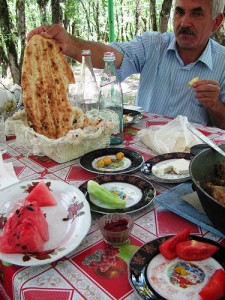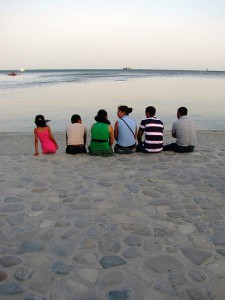Strange news from Scidev.net, which reports that:
[R]esults of a field study in Davao City, on the island of Mindanao in the Philippines, show that two Cavendish varieties are highly resistant to Panama disease.
These varieties, he said, were produced in Taiwan by selecting improved mutants from the Cavendish variety.
Why strange? For one thing, because Cavendish bananas have long been resistant to Panama disease. That’s why they are so widespread, because they replaced Gros Michel, the previous dominant variety, which was wiped out commercially by Panama disease in the 1950s and 1960s.
To give credit, Scidev.net explains that the threat is a new form of Panama disease, which is caused by the fungus Fusarium oxysporum, known as Tropical Race 4. Cavendish was resistant to race 1 of Fusarium wilt, to which Gros Michel was susceptible. Tropical Race 4 attacks Cavendish too. But not, according to the report, all Cavendish plants. Some clones, like those ones from Taiwan, are showing resistance.
Strange too because the thrust of the Scidev.net piece is that Filipino scientists are calling on the government to establish a National Research, Development and Extension Center for Banana. But hang on. Tropical Race 4 is a global menace. The very fact that Taiwanese selections are showing promise on Mindanao in the Philippines should give pause.
Wouldn’t it be much more efficient for all governments in the region and beyond to contribute to a global effort? The big banana concerns were to some extent to blame for the demise of Gros Michel and the march of Panama disease, as they abandoned infected plantations and brought new areas into cultivation until there was nowhere left to run and they had to switch. This time around, they could support a globally co-ordinated effort to find and distribute more resistant varieties.
 There were researchers from pretty much all of the countries of the
There were researchers from pretty much all of the countries of the  Sure, they have problems. Where do they not? But there seems to be a real commitment to getting the job done, enthusiasm even. I was particularly struck by the relatively close linkages between genebanks and breeding programmes in many of the CAC countries. That you certainly don’t see everywhere. I wonder if it’s a legacy of the VIR system. They could do with more collaboration, coordination and sharing of responsibilities at the regional level, not to mention better integration with the rest of the world. But maybe this meeting will help. Anyway, all the presentations, abstracts and final recommendations will be online soon. I’ll post something when they’re up and you can make up your own minds.
Sure, they have problems. Where do they not? But there seems to be a real commitment to getting the job done, enthusiasm even. I was particularly struck by the relatively close linkages between genebanks and breeding programmes in many of the CAC countries. That you certainly don’t see everywhere. I wonder if it’s a legacy of the VIR system. They could do with more collaboration, coordination and sharing of responsibilities at the regional level, not to mention better integration with the rest of the world. But maybe this meeting will help. Anyway, all the presentations, abstracts and final recommendations will be online soon. I’ll post something when they’re up and you can make up your own minds.